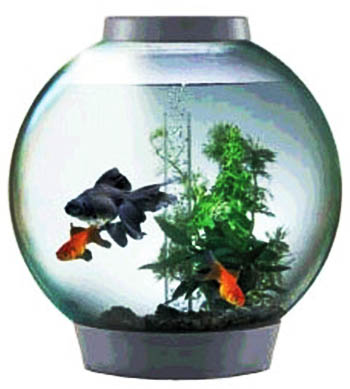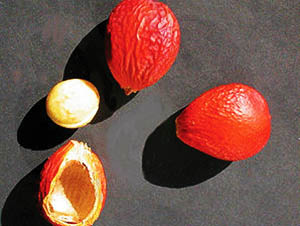
Avoid disease in your aquarium
 THERE ARE many diseases that can affect your aquarium fish and once
your tank is infected, there’s a good change that all your fish can get
sick. Luckily, keeping a disease free tank is not that hard. Most of the
diseases are a result of poor water quality so not overcrowding your
tank and keeping a regular maintenance schedule is a must. THERE ARE many diseases that can affect your aquarium fish and once
your tank is infected, there’s a good change that all your fish can get
sick. Luckily, keeping a disease free tank is not that hard. Most of the
diseases are a result of poor water quality so not overcrowding your
tank and keeping a regular maintenance schedule is a must.
Most aquarium diseases can be avoided by making sure your aquarium
water is healthy. If disease does break out, doing a water change and
treating the water for the particular disease is the best way to nip it
in the bud. If you don’t do these two things your tank is a disaster
waiting to happen.
Neglecting the appropriate tank maintenance and partial water changes
will allow toxins to build up in the water, basically polluting your
fish’s environment. As the water becomes more toxic your fish become
more “stressed”, the more stressed your fish becomes the easier it is
for the micro-organisms present in your aquarium water to infect your
fish with various diseases.
I addition to ensuring your aquarium has good water quality, you
should also keep an eye on your fish each day so that you can be alerted
to any signs of stress right away and take the appropriate action.
So how do you tell if your tropical fish are stressed?
Tropical fish don’t react the same way to stress as people do, but
there are some tell tale signs you can be on the look out for.
Some things to look for include; fish rubbing themselves against the
gravel or aquarium décor, fish hiding in the corner or under plants or
rocks all the time, fish bobbing around with their fins close to their
body and any growths or white fuzzy spots are some of the things that
indicate aquarium disease.
 Of course, the first step in treating aquarium disease is preventing
it. Here’s some steps to make sure your aquarium remains free of
disease: Of course, the first step in treating aquarium disease is preventing
it. Here’s some steps to make sure your aquarium remains free of
disease:
1. Don’t overcrowd your fish tank. Your tank can only support so many
fish - the more fish you have the more waste they create and if the
filtration cannot handle the waste you end up with toxins in the water
that can accumulate to dangerous levels over time. The larger the tank,
the more fish you can have.
2. Acclimate new fish to the tank properly. When you bring a new fish
home from the pet store, it’s already been through quite a bit.
Shipped from the breeders to the new store and put in a new tank,
then transported into your tank all can be stressful to the fish.
To acclimate your fish properly, make sure you float him in the bag
in your aquarium for 10 minutes then open the bag and introduce some of
your aquarium water into the bag, let that sit for about 10 minutes and
then let the fish out into your tank.
3. Make sure to have great water quality. Since poor water quality is
the greatest case of fish disease and death you’ll want to be diligent
about your tank maintenance and partial water changes.
Also, make sure to test the PH and nitrite/nitrate levels and adjust
the tank accordingly.
This is quite easy and there are test kits made for testing as well
as adjusting the water.
Keeping your aquarium disease free is not difficult and will help you
enjoy beautiful healthy fish for years to come!
www.hobbyarticledirectory.com
Flowers of Sri Lanka:
Planting Orchids and Palms
Manoj DISSANAYEKE
 ORCHIDS BEAR PODS, which contain seeds. These pods are one to two
inches long and the seeds are so tiny that they almost resemble dust.
Believe it or not, a single pod contains more than a million seeds. ORCHIDS BEAR PODS, which contain seeds. These pods are one to two
inches long and the seeds are so tiny that they almost resemble dust.
Believe it or not, a single pod contains more than a million seeds.
These seeds need the necessary amount of moisture, shade, temperature
and a certain fungus called ‘micoraisa’ to grow into healthy plants.
Therefore it is more beneficial if you are able to obtain laboratory
facilities in propagating them.
Palms fall into the palmar family. Corn palm, Queen palm, Fan palm,
Royal palm, Cabbage palm all grow out of seeds.
When the palm seeds have matured they turn into a reddish golden
colour. Pluck them at this shade.
Another way of recognising when to pluck the seeds is to squeeze the
succulent part of the fruit. If the seed pops out, then it is matured.
However take care to protect the crop from birds and other prey at
this stage.
keep the seeds in water for two to three days. You will be able to
get rid of the succulent part surrounding the seeds more easily then.
Wash the seeds well, first in clean water and then in fungicide. It is
not necessary to get rid of the thorny layer surrounding the seeds. Dry
in the light rays of the sun. These seeds are not suitable for
propagation.
Planting the seeds
The techniques and methods used in planting seeds differ according to
the species. Let us take a look at some of these common methods which
have gifted us with new plants.
Planting annuals
 Zinnias, Marigolds, Asters, Petunias, Flocks, and Dianthus are some
of the annuals which we would be focusing on in this section. Zinnias, Marigolds, Asters, Petunias, Flocks, and Dianthus are some
of the annuals which we would be focusing on in this section.
These plants bear small seeds. They can be planted according to two
methods, either in nursery trays meaning in artificial pots or outdoors
in flower beds.
Outdoor flower beds
Use raised beds to plant the seeds. Prepare the flower bed three feet
in width and the length according to your preference. Mark the size of
the flower bed before preparing them.
Loosen soil six to eight inches deep in this area. Form a drain
around the bed.
The outer layer of the bed should be sterilized to get rid of harmful
microscopic beings. Use hay or saw dust to burn the outer layer soil in
this process. After two weeks add the primary medium.
(The writer is the Agriculture Instructor of Royal Botanical gardens,
Peradeniya)
Want to keep a garden fountain?
 Interested in a nice accent to enhance your backyard, patio, or deck? Interested in a nice accent to enhance your backyard, patio, or deck?
How about bringing an element of the great outdoors, indoors?
A new garden fountain may be just what you need to offer a decorative
effect, along with the relaxing sounds of gently flowing water to any
setting in the home or landscape.
This article provides a basic garden fountain review for ideas on
selecting an indoor or outdoor garden water feature, along with a few
tips for avoiding costly mistakes when it comes to choosing a great
garden fountain for your home.
Garden fountains come in a wide range of sizes, shapes, and styles.
Some are designed to stand right in the garden and provide an attractive
focal point.
Others can be incorporated into an ornamental landscape, mounted on
an exterior wall of the home, or be situated on a patio or deck.
Indoor fountains can also be used in a variety of locations with
various models designed for indoor wall mounting, use in an upright
floor standing position, as a room divider, or smaller table top
versions that will fit just about anywhere.
In addition to providing an attractive accent to the home or
landscape, fountains also offer tranquil relaxation with the soothing
sounds of flowing water. It is also surprising how well they can serve
to drown out unpleasant background noises.
Drawbacks of discount indoor or outdoor fountains
What starts out as a relatively quiet pump may not take long to
become irritatingly loud. There were problems with splash and splatter
finding its way onto furniture, or other issues involving fountains that
became clogged, covered with a build-up of residue, or required frequent
cleaning.
Some outdoor fountains may not hold up to the constant erosion of
water and exposure to intense sunlight and other outdoor elements.
Therefore the paint will start peeling, pumps will malfunction, or
the fountain’s material will simply crumble and disintegrate over time.
Hence make your selection wisely when choosing the ideal fountain.
You need time and money to maintain a fountain. Keep the fountain
clean and tidy otherwise it will not only become a habiting place for
mosquitoes but it will be a dwelling place for many diseases.
|

